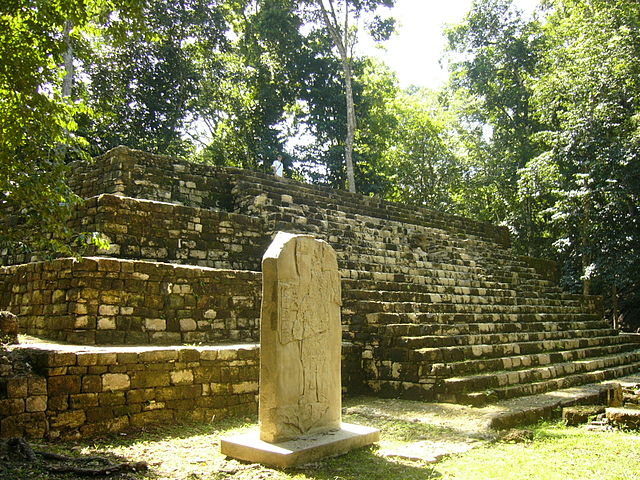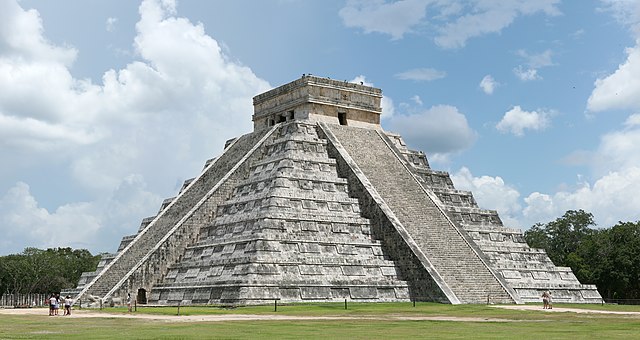Aguateca is a Maya site located in northern Guatemala's Petexbatun Basin, in the department of Petén. The first settlements at Aguateca date to the Late Preclassic period. The center was occupied from about 200 B.C. until about 800 A.D., when the city was attacked and ransacked. Because the city was rapidly abandoned by its population, Pompeii-style assemblages were left scattered on the floors of elite residences. Horizontal excavation of these residences has revealed ancient elite activity and household level craft production areas. Aguateca sits on top of a 90 metres (300 ft) tall limestone bluff, creating a highly defensible position. This steep escarpment overlooks Petexbatun Lagoon in the Southwestern Guatemalan lowlands and is accessible by boat. There is an extensive system of defensive walls that surrounds the city, reaching over 3 miles (4.8 km) in length. Its center consisted on the Palace Group, which was probably a royal residential compound, and the Main Plaza. These monumental complexes were connected by a causeway, along which was a densely occupied elite residential area. During the reign of Tan Te' K'inich the city was invaded and burned. The city was completely abandoned around 830 AD. A 6-metre (20 ft) tall temple at the site was left unfinished, the centre of the city was destroyed by fire, valuables were left scattered in elite residences, and ceramics were left in their original domestic positions, all of which demonstrate the sudden abandonment of the city. The ruins of Aguateca are considered to be among the best preserved in Guatemala.

The main plaza of Aguateca showing a large stone stela
Plan of Aguateca viewing to the north. The site of Aguateca is built in between the Main Chasm on the west and the steep escarpments on the east
Palacio Real
View from Palacio in Plaza 2 de Aguateca
The Maya civilization was a Mesoamerican civilization that existed from antiquity to the early modern period. It is known by its ancient temples and glyphs (script). The Maya script is the most sophisticated and highly developed writing system in the pre-Columbian Americas. The civilization is also noted for its art, architecture, mathematics, calendar, and astronomical system.
El Castillo, at Chichen Itza
Detail of Lintel 26 from Yaxchilan
Stela D from Quiriguá, representing king Kʼakʼ Tiliw Chan Yopaat
Calakmul was one of the most important Classic period cities.








